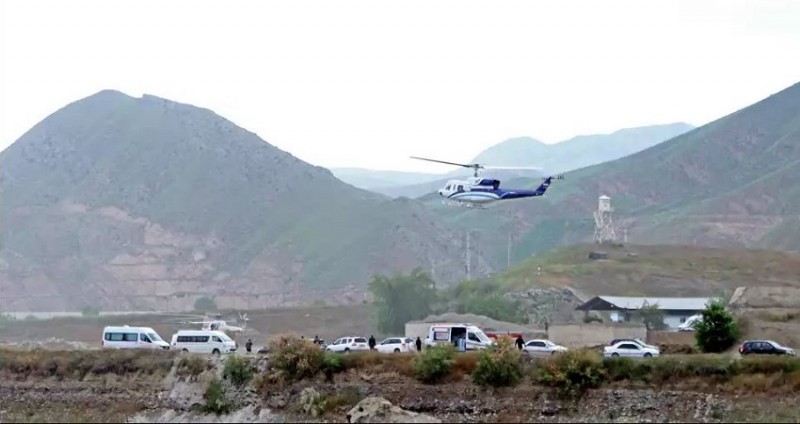
Iran Helicopter Crash Highlights Aging Fleet and Internal Challenges: Iran's President Ebrahim Raisi and his delegation, including the Foreign Minister, were on board a helicopter heading southwest to a new oil pipeline near Tabriz when it crashed into a mountain. The incident has drawn attention to the country's aging fleet and its internal challenges.
The Bell 212 helicopter, known as the Huey in the United States, crashed in a cloud-covered mountainous area, raising questions about the safety of Iran's air force fleet. The cause of the crash has not yet been determined, but initial reports from Iranian military investigators have ruled out sabotage or a cyberattack.
The Bell 212, nearly 30 years old, was originally manufactured in Montreal, Canada, and is part of Iran's air force fleet, which includes 12 similar aircraft still in service. Despite its age, the Bell 212 is still flown in various parts of the world, including the United States, where it serves in roles supporting nuclear forces and VIP missions.
Iran's use of the Bell 212 traces back to deals made by the late Shah Mohammad Reza Pahlavi, who purchased hundreds of the helicopters before the 1979 Islamic Revolution. However, Western sanctions have limited the availability of spare parts, leading to challenges in maintaining the airworthiness of the aircraft. Despite efforts to locally overhaul them, Iran has resorted to covert means to procure parts, leading to criminal cases in the United States.
The crash has prompted criticism from Iranian officials, with some questioning why the helicopter took off in deteriorating weather conditions. Former Iranian Presidents have survived helicopter crashes, prompting speculation about standard safety practices.
While the investigation continues, experts believe the Bell 212 lacks advanced avionics that could have aided low-visibility flights. They argue that the decision to fly in poor weather conditions may have been influenced by pressure from VIP passengers.
The incident has further highlighted the dualities within Iran, where advanced capabilities coexist with significant operational challenges. The crash has underscored the risks associated with flying an aging fleet of helicopters in adverse weather conditions.
Belarus President Blames US Sanctions for Iran President's Death in Helicopter Crash
Iran Ready for Presidential Election After Ebrahim Raisi's Death, What's Special
Gaza Conflict Sparks New Clashes Between Israel and Hezbollah